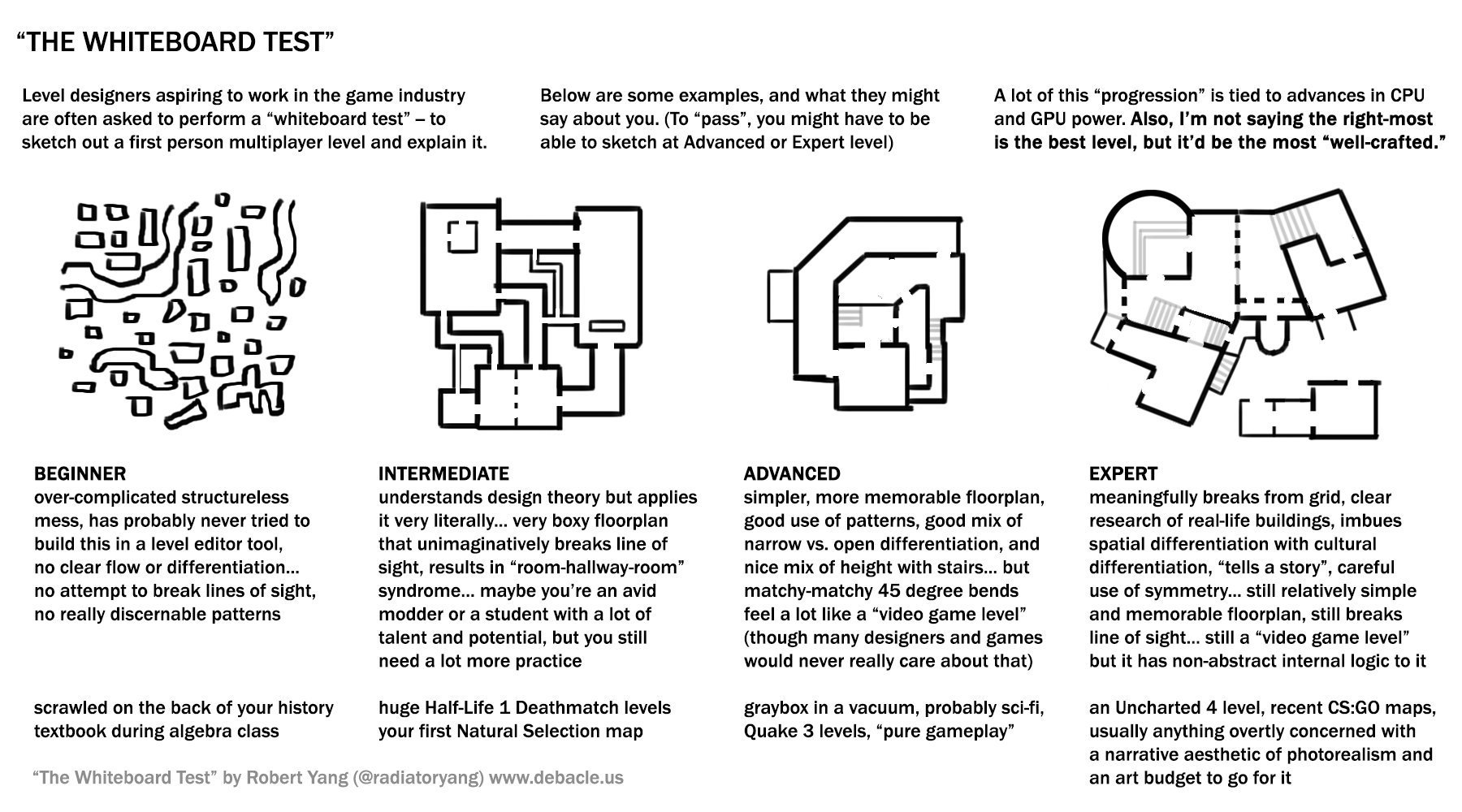Developer Robert Yang suggested and commented on different ways to solve the “blank slate” test — a test for developers that determines their literacy in creating level design.
During the test, the applicant is asked to sketch a map plan for a multiplayer shooter. Yang identifies 4 main types of levels and notes the details that distinguish a beginner from a guru of designing arenas for virtual battles.
“Clean sheet” with comments by Robert Young
 Inexperienced level designers randomly fill the map space with the same type of objects.
Inexperienced level designers randomly fill the map space with the same type of objects.
Middle-class designers already have a map structure, as a rule, confusing and not going beyond the combination of “room-corridor-room” elements. This design was found in the multiplayer of the first part of Half-Life.
Advanced designers draw maps with a simpler and more logical design that is easy to keep in mind when moving through them, combine combinations of narrow and open spaces, and create additional levels using stairs.
A similar design is typical for cards from Quake 3. They are good for competitive gameplay, but too utilitarian and abstract.
Level design experts know the techniques of the previous level, but they add elements from the layout of real buildings of various architectural traditions to them, do not abuse symmetry and allow the map to be not only a convenient arena for fighting, but also to “tell the story” of this location.
Examples of such maps are the Uncharted 4 multiplayer, a number of levels in Counter-Strike: Global Offensive.
Robert Young teaches at the New York University Tisch School of the Arts Game Center
Also on the topic:
